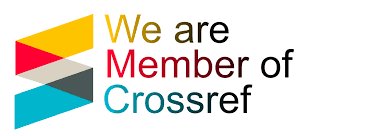USING INFORMATION AND COMMUNICATION TECHNOLOGIES IN LITERATURE LESSONS
DOI:
https://doi.org/10.63034/esr-144Keywords:
ICT, literature, lesson, efficiency, board PadletAbstract
The article examines the effectiveness of using information and communication technologies (ICT) as a modern pedagogical technology using the example of using the Padlet board in literature lessons. Today's century is the century of high computer technologies. In the modern world, knowledge of information technologies is placed on a par with such qualities as the ability to read and write, therefore the role of the teacher in information culture changes, he becomes the coordinator of the information flow. It is necessary to constantly form information culture in schoolchildren. Using only traditional teaching methods in teaching
literature is impossible. One of the most effective technologies is information and communication technology (hereinafter ICT).
References
Боголюбов В.И. Инновационные технологии в педагогике // Школьные
технологии. 2005.
Босова Л.Л. Компьютерные уроки в начальной школе // Информатика и
образование. - 2002. -
Ковалёва А. Г. Использование информационно-компьютерных технологий
при обучении в начальной школе. 2006
Полат, Е.С. Современные педагогические и информационные технологии в
системе образования: учеб. пос. – М.: Академия, 2007.
Ахметова, Н.А. Информационно-коммуникативные технологии в процессе
обучения языкам. – 2019.
Исмаилова, Ш.А. Использование мультимедийных средств в обучении
русскому языку при формировании самообразовательной компетенции учащихся.-
https://nauchniestati.ru/spravka/vliyanie-ikt-na-pedagogicheskie-tehnologii/
https://www.kaznu.kz/content/files/pages/folder21141/2020%2002(225)%20%
D0%98%D1%81%D0%BC%D0%B0%D0%B8%D0%BB%D0%BE%D0%B2%D0%B0%20%
D0%9E%D0%93%D0%A3.pdf
Published
How to Cite
Issue
Section
Categories
License
Copyright (c) 2024 Сванкулова Б

This work is licensed under a Creative Commons Attribution 4.0 International License.





